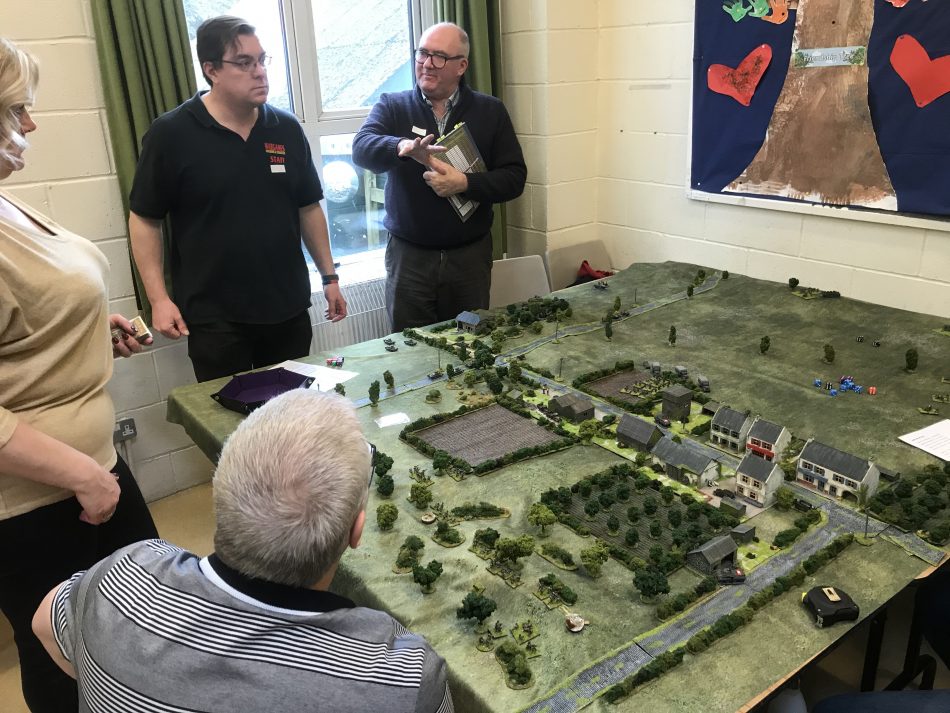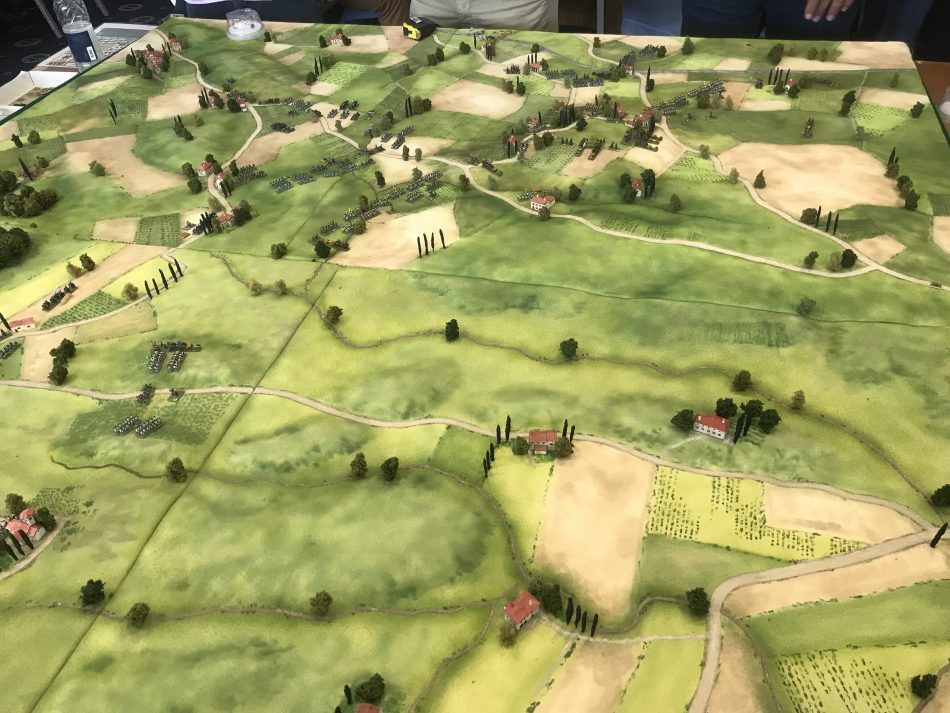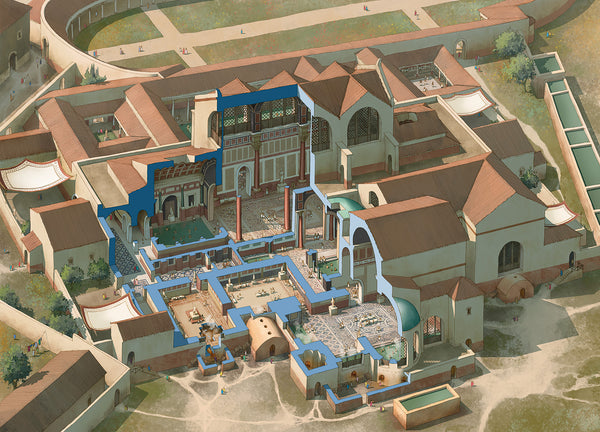Gaming boards, tiles or mats?
I’m musing how to best present my Constantinople 1453 game and weighing up what to base it on. Should I go with a mat or more traditional board?
In recent years there has been an explosion in high quality gaming mats. These are printed onto thick cloth or mouse mat material and come in just about any design. Light, easy to store and with some terrain scattered on top of them, the end effect can be superb. You can also get custom printed mats that will be able to accurately follow the aerial maps of the area. Although the initial outlay might seem quite expensive, they can be used with little wear and tear, and won’t shed flock all over the floor! In my mind these may well be the best way forward for future projects. I’ve certainly got a couple I use when I want a quick game on a normal club night with precious little time to prepare.

When used well mats can look awesome. Chris King enjoying the British counterattack at Arras in 1940. Game and terrain by Jenny and Phil Turner.
Tempting though a custom mat might be, in the end I’ve opted for a more traditional board. Harder to store, bulky, and probably far greater investment in time and money, they might not seem like the normal Backhouse choice!

These cleverly designed tiles have used canvas over polystyrene hills. They are based around the actual map contours of the real battle. Game by Bruce Weigle.
My last 2mm game was based on 12mm thick plywood with foam underlay cut to shape, representing the Siege of Portsmouth in 1642. The plywood is relatively thin and therefore stores upright reasonably well. It’s also near impervious to damage, save for the foam underlay that gets the odd nick or chip. Plywood is easily available from most local DIY shops, and the initial cost is about the same as a roll mat for a 6’x4’ table. This comes with some caveats. It needs something to protect it from warping. I gave my boards several coats of PVA on the reverse side, which has helped minimise this. The other issue is the weight. Plywood is heavy and it can be an exerting experience to lug them in and out of the car.

These smashing terrain tiles show how effective they can be at creating height differences on the tabletop. Game by Jon and Nick Matthews.
In the end, I’ve gone for blue craft foam for my table. It’s a medium I’ve seen other people swear by, but to be honest, haven’t had a great deal of experience with it. It’s pretty hard to get off the shelf and mine needed ordering in. This obviously adds to the cost. That said, it’s exceptionally light. It can be cut into to form gullies and trenches easily, and won’t warp. Being high density rather than white polystyrene it should minimise chips and damage. I’m still fearful that I’ll do something daft with it on a windy day as I take it from my car! I’ve now got six 4’x2’ boards sitting in a box, enough for an epic 6’x8’ table! Will the premium outlay be a worthwhile investment? We will have to see! I’ll keep you posted.


